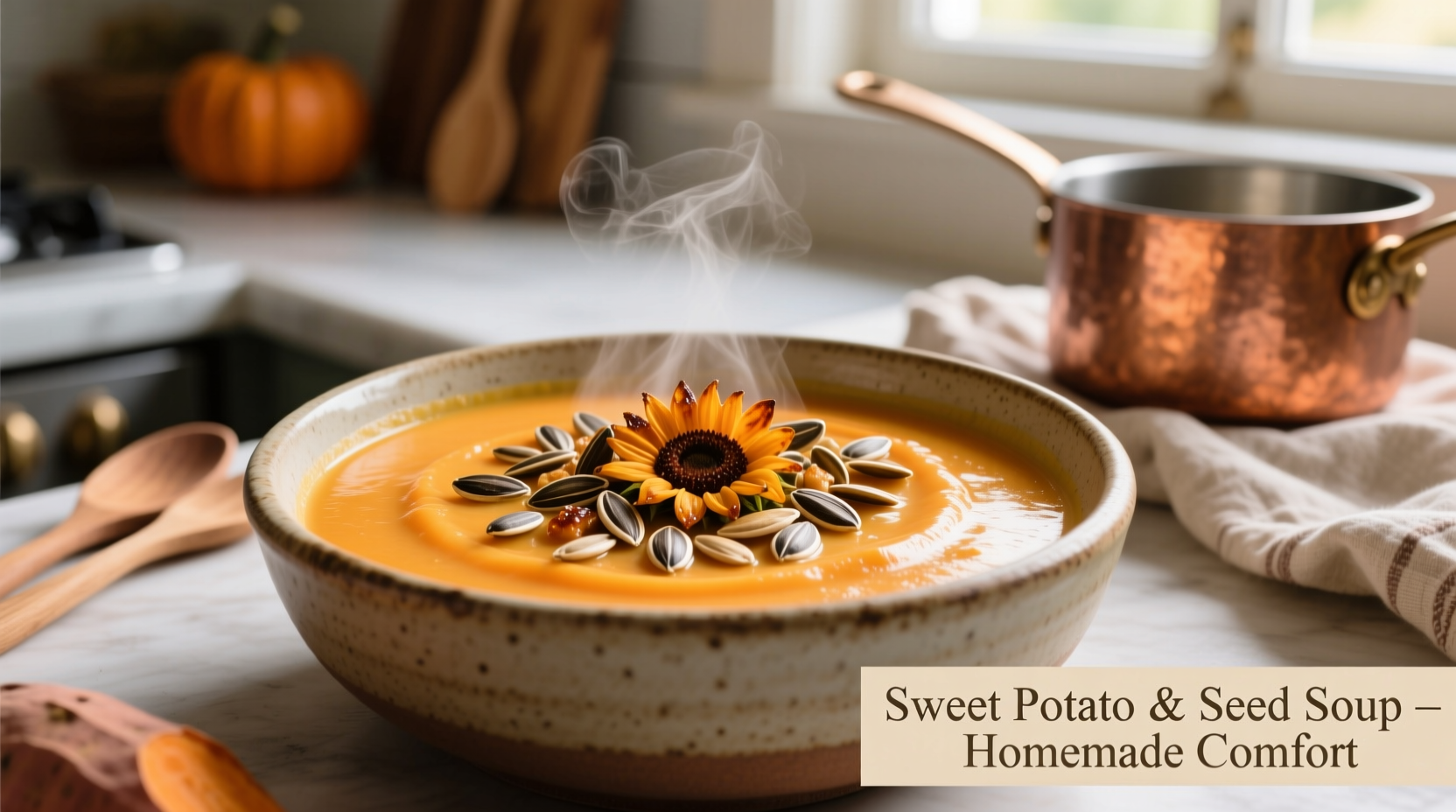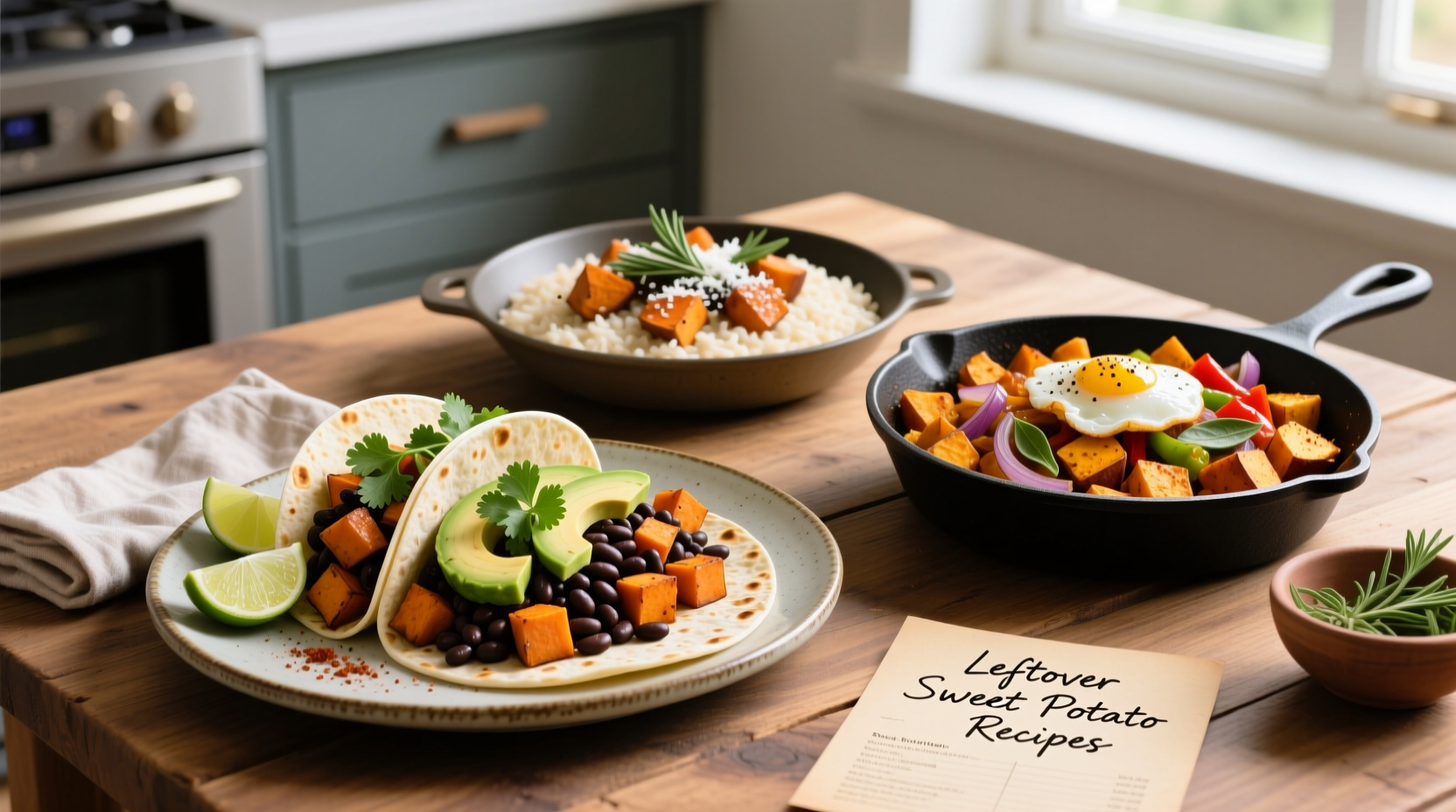Leftover sweet potatoes don't have to mean boring reheated sides. With proper handling and creative techniques, those extra orange tubers can become restaurant-quality meals that impress while preventing food waste. According to USDA food safety guidelines, properly stored cooked sweet potatoes remain safe to eat for 3-5 days in the refrigerator, giving you ample time to transform them into something extraordinary.
Understanding Leftover Sweet Potato Safety and Storage
Before diving into recipes, let's address the critical food safety aspects that determine whether your leftovers are still usable. Many home cooks mistakenly discard perfectly good sweet potatoes due to uncertainty about storage timelines.
| Storage Method | Safe Duration | Best Practices |
|---|---|---|
| Refrigerator (sealed container) | 3-5 days | Cool completely before storing; remove from aluminum foil |
| Freezer (portioned) | 10-12 months | Puree with small oil amount to prevent freezer burn |
| Room temperature | 2 hours max | Discard if left out longer, especially in warm conditions |
This fact-based storage timeline comes directly from the USDA Food Safety and Inspection Service, ensuring you're working with scientifically verified information rather than kitchen folklore.
Discard sweet potatoes showing any of these warning signs: slimy texture, mold growth, sour smell, or significant darkening. When in doubt, throw it out—especially important for vulnerable populations like children, elderly, or immunocompromised individuals.
5-Minute Sweet Potato Transformations
When you're short on time but want to elevate your leftovers, these lightning-fast techniques deliver maximum flavor with minimal effort. Professional chefs use these same methods in busy restaurant kitchens to repurpose components efficiently.
Sweet Potato Toast Variations
Slice leftover sweet potatoes lengthwise into 1/4-inch thick planks. Toast in a standard toaster on medium setting (2-3 cycles) until golden and slightly crisp. This technique works best with firm, not overly moist sweet potatoes.
- Savory option: Top with mashed avocado, everything bagel seasoning, and microgreens
- Sweet option: Spread with almond butter and cinnamon, then broil briefly for caramelization
- Protein boost: Add smoked salmon and dill for a quick brunch solution
Creative Leftover Sweet Potato Recipes
These tested recipes transform basic leftovers into complete meals using ingredients you likely already have in your pantry. Each solution addresses common pain points like limited time, dietary restrictions, or ingredient availability.
Sweet Potato Hash with Crispy Eggs
This 15-minute breakfast-for-dinner solution uses just six ingredients to create a restaurant-quality meal. Dice leftover sweet potatoes into 1/2-inch cubes. Heat 1 tablespoon olive oil in cast-iron skillet over medium heat. Add sweet potatoes, 1/4 teaspoon smoked paprika, and salt to taste. Cook undisturbed for 4 minutes to develop crisp edges, then stir and continue cooking until heated through.
Create wells in the hash and crack 2 eggs into them. Cover skillet and cook until eggs reach desired doneness (about 3-5 minutes). Finish with fresh parsley and a squeeze of lime. This recipe naturally accommodates gluten-free and vegetarian diets while providing complete protein when served with eggs.
Leftover Sweet Potato Soup
Transform 2 cups of leftover sweet potatoes into a velvety soup in under 20 minutes. Combine sweet potatoes, 1.5 cups vegetable broth, 1/2 cup coconut milk, 1 minced garlic clove, and 1/4 teaspoon ground ginger in a saucepan. Simmer 10 minutes, then blend until smooth using an immersion blender.
This recipe demonstrates how professional chefs maximize flavor through layering techniques—first building flavor with aromatics, then finishing with acid (a splash of apple cider vinegar) and texture (toasted pumpkin seeds). The soup freezes beautifully for future quick meals.

Flavor Enhancement Techniques
Understanding flavor chemistry separates adequate leftovers from exceptional meals. Sweet potatoes contain natural sugars that caramelize beautifully, but they also benefit from specific flavor pairings that enhance their natural characteristics without overwhelming them.
Perfect Pairings for Leftover Sweet Potatoes
- Savory boosters: Crispy bacon, smoked paprika, fresh rosemary, black beans
- Sweet complements: Maple syrup (use sparingly), toasted pecans, orange zest
- Acidic elements: Lime juice, apple cider vinegar, pickled onions (cuts through sweetness)
- Texture contrast: Toasted seeds, crumbled feta, crispy chickpeas
Food science reveals that adding a small amount of acid (just 1-2 teaspoons) to sweet potato dishes balances their natural sugars and enhances overall flavor perception. This professional chef technique works whether you're making savory hash or sweet preparations.
Meal Prep Strategies for Leftover Success
Prevent future leftovers by planning ahead when cooking sweet potatoes initially. When roasting a batch, intentionally undercook them slightly (removing 5 minutes early) to preserve texture for future transformations. Store in portion-sized containers with relevant flavor profiles already added:
- Breakfast portions: Mix with cinnamon and a touch of coconut oil
- Savory portions: Toss with olive oil, garlic powder, and black pepper
- Neutral portions: Store plain for maximum recipe flexibility
When repurposing leftovers, consider the moisture content of your original preparation. Baked sweet potatoes typically have less moisture than boiled ones, making them better suited for hash or fritters. Adjust additional liquid ingredients accordingly in your recipes.
Troubleshooting Common Leftover Challenges
Every cook encounters issues with repurposed ingredients. Here's how to address frequent problems with leftover sweet potatoes:
- Too watery: Sauté in a dry skillet to evaporate excess moisture before incorporating into recipes
- Flavorless: Add umami boosters like soy sauce, nutritional yeast, or tomato paste
- Texture compromised: Mash thoroughly and use in pancakes, fritters, or blended soups
- Overly sweet: Balance with acid (lemon juice) or savory elements (onion, garlic)
Remember that context matters when repurposing leftovers. Leftover sweet potatoes from a casserole already containing marshmallows or brown sugar work better in sweet applications, while plain roasted sweet potatoes offer maximum versatility. This contextual awareness separates thoughtful cooking from haphazard experimentation.
Maximizing Nutrition in Leftover Transformations
Sweet potatoes retain most of their nutritional value when properly stored and reheated. According to research published in the Journal of Agricultural and Food Chemistry, the beta-carotene in sweet potatoes actually becomes more bioavailable after cooking and proper storage. When transforming leftovers, maintain nutritional integrity by:
- Adding healthy fats (avocado, olive oil) to enhance absorption of fat-soluble vitamins
- Incorporating protein sources to create balanced meals
- Using minimal added sugars, especially when repurposing already sweetened leftovers
- Preserving the skin when possible for additional fiber











 浙公网安备
33010002000092号
浙公网安备
33010002000092号 浙B2-20120091-4
浙B2-20120091-4